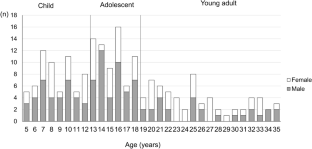2025-03-27 国立精神・神経医療研究センター
<関連情報>
- https://www.ncnp.go.jp/topics/detail.php?@uid=LWEQAZ6MWjqsrWaB
- https://www.cell.com/iscience/fulltext/S2589-0042(25)00439-0
末梢感覚神経活動の双方向光遺伝学的調節: チャネルロドプシンとハロロドプシンを介した誘導と抑制の比較 Bidirectional optogenetic modulation of peripheral sensory nerve activity: Induction vs. suppression through channelrhodopsin and halorhodopsin
Akito Kosugi ∙ Moeko Kudo ∙ Ken-ichi Inoue ∙ Masahiko Takada ∙ Kazuhiko Seki
iScience Published:March 26, 2025
DOI:https://doi.org/10.1016/j.isci.2025.112178
Graphical abstract

Highlights
- We have succeeded in optogenetic manipulation of peripheral sensory nerve activity
- Optical stimulation evoked and inhibited activity in large-diameter afferents
- Efficacy varied with the irradiation site, with nerves preferred for suppression
- Our method expands the therapeutic scope of optogenetics for sensory disorders
Summary
In this study, we investigated the potential of optogenetics for modulating activity of peripheral sensory nerves, particularly tactile and proprioceptive afferents. Using adeno-associated virus serotype 9 vector, we selectively transduced channelrhodopsin (ChR2(H134R)) and halorhodopsin (eNpHR3.0) into large-diameter sciatic nerve afferents of rats. Diverging from conventional dorsal root ganglion (DRG) approaches, we applied optical stimulation at the distal portion of the nerve. Results show successful induction and suppression of activity in large-diameter afferents via optical stimulation. By increasing the intensity of blue (for ChR2(H134R)) and yellow (for eNpHR3.0) light stimulation, the activity of fast-conducting afferent fibers was preferentially evoked or inhibited in an intensity-dependent manner. This indicates that the activity of large-diameter afferents can systematically be regulated by optogenetics. The present innovative methodology for manipulating specific sensory modalities at the nerve level offers a targeted and accessible alternative to DRG stimulation, expanding the therapeutic scope of optogenetics for treating sensory disorders.


